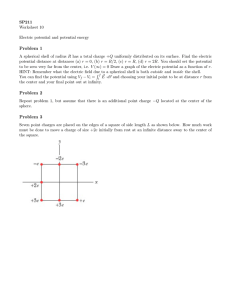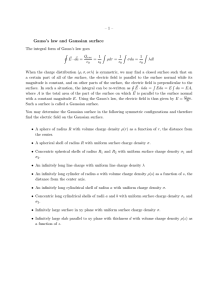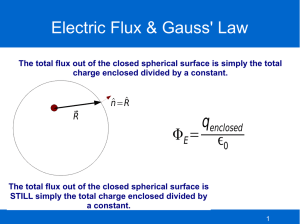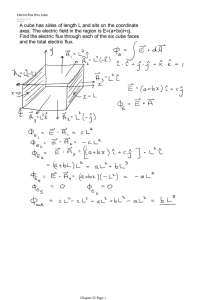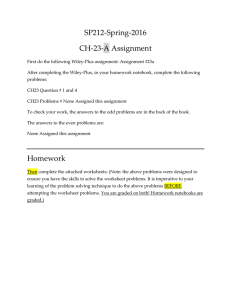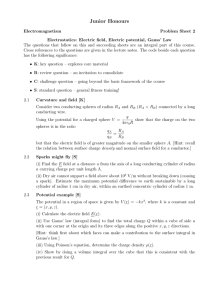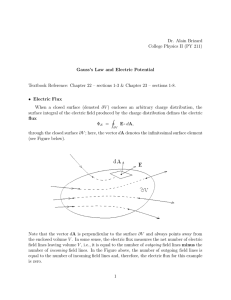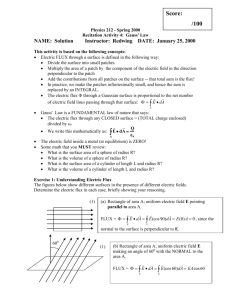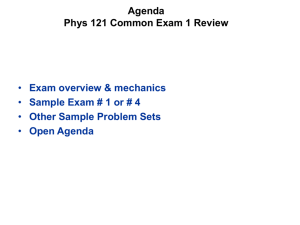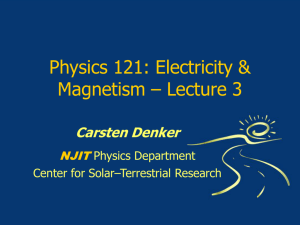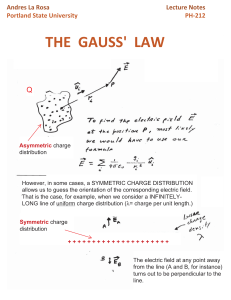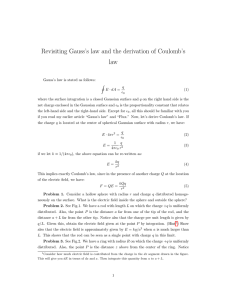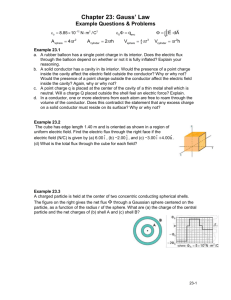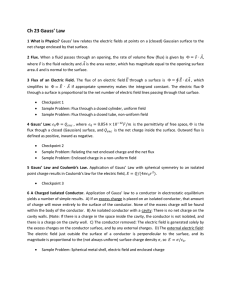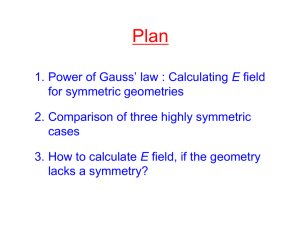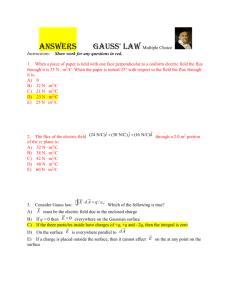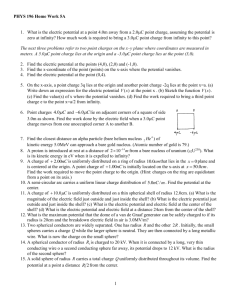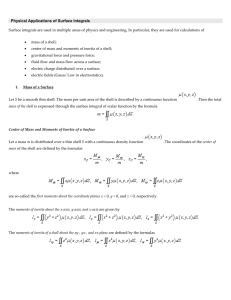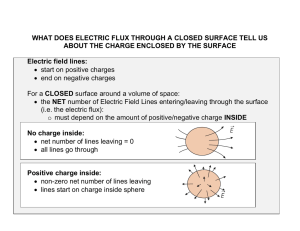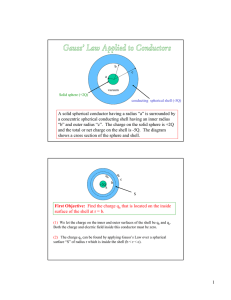Lecture #26
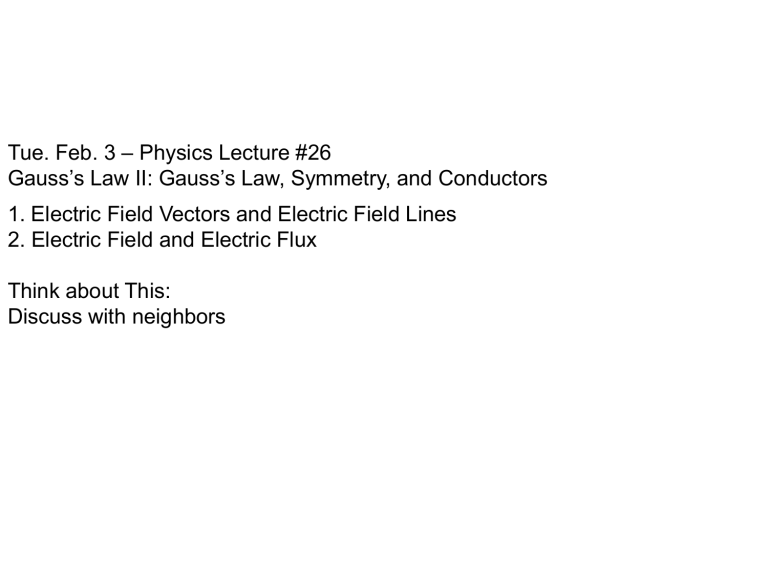
Tue. Feb. 3 – Physics Lecture #26
Gauss’s Law II: Gauss’s Law, Symmetry, and Conductors
1. Electric Field Vectors and Electric Field Lines
2. Electric Field and Electric Flux
Think about This:
Discuss with neighbors
The figure shows three charges that have the same magnitude of charge q .
What is the value of the electric flux for each of the five closed surfaces a , b , c , d , and e (shown in cross section) in the figure?
c a b e d
Does Gauss’s law apply to a spherical Gaussian surface not centered on a point charge, as shown in the figure? Would this be a useful surface to use in calculating the electric field?
+
A 2.6 m
C charge is at the center of a cube 7.5 cm on each side. What is the electric flux through one face of the cube? Hint: think about symmetry, and don’t do an integral.
Why can’t you use Gauss’s law to determine the field of a uniformly charged cube? Why wouldn’t it work to draw a cubical Gaussian surface?
A point charge –2 Q is at the center of a spherical shell of radius R carrying surface charge density s spread uniformly over its surface. What is the electric field at (a) r = R /2 and (b) r = 2 R ? (c) How would your answers change if the surface charge density on the shell were doubled?
A point charge –2 Q is at the center of a thick metal spherical shell with inner radius R i and outer radius R o
. The shell carries a net charge of + a) Determine the electric field everywhere.
Q . b) Determine the surface charge density on the inside of the shell and the outside of the shell.
Charge Q is uniformly distributed throughout a sphere radius R. Determine the electric field everywhere.
